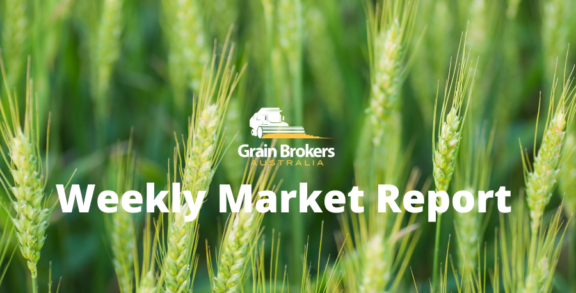Canadian wheat shipments, excluding durum wheat, through licensed export facilities are running well ahead of the average of the past three years and close to record pace this season, according to export data released last week. However, since the Canadian export season commenced on August 1 last year, total grain and oilseed shipments are tracking well behind the previous season’s pace, with canola the prime laggard.
The Canadian Grain Commission data released last week was for week 25 of the export year, which ended on Sunday, January 21. It put total grain and oilseed exports season to date for the fifteen commodities that make up Canada’s “Principal Field Crops” at 21.32mmt, 11 per cent behind the 23.949mmt shipped in the same period a season earlier, with lower supply and geopolitical uncertainty in global grain markets the primary drivers.
Wheat exports (excluding durum) in week 25 totalled 383,000 metric tonne, fractionally lower week-on-week. Nonetheless, that took total exports thus far in the 2023/24 to 10.166 million metric tonne, 6.7 per cent ahead of the previous season’s pace and 22.2 per cent higher than the average of the past three years. Agriculture and Agri-Food Canada (AAFC) left their 2023/24 export estimate unchanged in this month’s update at 20mmt after raising it by 2mmt in December. This forecast is still 3 per cent below the 20.612mmt shipped in the 2022/23 season.
Exports in eight of the last ten weeks have exceeded the pace required to reach the AAFC export estimate, and a repeat in week 26 would push shipments in the first half of the 2023/24 export program past 10.5mmt, suggesting that export shipments of 21mmt are on the cards. However, the average pace for the past five seasons has 44.7 per cent of total exports completed by the end of week 25. While this projects forward to a total export program of 22.74mmt by July 31, domestic supply constraints and logistics bottlenecks will render that volume highly unlikely.
Durum wheat exports were slightly higher week-on-week at 101,000mt but are running 39.3 per cent behind last season’s week 25 pace at 1.519mmt. While this still puts shipments on track to meet the AAFC’s current 2023/24 durum wheat export estimate of 3.2mmt, it is well behind the pace in 2022/23 when total exports were 5.053mmt.
AAFC pegged domestic wheat consumption, including durum, for the current season at 8.587mmt, 1.7 per cent lower than in 2022/23. Food, seed and industrial use are expected to be down slightly at 3.4mmt, as is feed use at 4.147mmt, leaving a carry-out estimate of 3.95mmt, 8 per cent higher than the 2022/23 carry-out of 3.658mmt.
With just one cargo of 34,600mt loaded out in the week ending January 21, total canola exports in the first 25 weeks of the export year reached 2.723mt, 1.392mmt or 33.8 per cent lower than the same period in 2022/23. Domestic use of canola in 2023/24 is expected to be slightly higher, with a record canola crush of 10.5mmt forecast as the sector expands to serve US demand from the renewable energy market. The canola crush in December totalled 943,300mt, well ahead of the 811,900mt average for the past three years, bringing the total for the first five months of the season to 4.578mmt, 14 per cent higher year-on-year and 12.7 per cent ahead of the three-year average.
Barley exports season-to-date total just 917,800mt, 43.6 per cent lower than the 1.629mmt shipped in the first 25 weeks of the 2022/23 season. Monthly exports have been poor, except for November at 390,000mt, with China the leading destination, taking around 90 per cent of the total. This volume is significantly lower than Canadian barley exports for the same period in each of the past three years, as the full impact of the lifting of the ban on Australian barley exports into China hits home for the Canadian farmer. Malting barley exports in the season’s first four months were 184,000mt, up 11 per cent year-on-year and 4 per cent above the five-year average.
Domestic consumption of barley in 2023/24 is expected to be 3.2 per cent higher than the previous season at 6.155mmt. The feed grain market holds the biggest share, with use unchanged year-on-year at 5.595mmt. Feed barley prices early this month in the Lethbridge, Alberta, feedlot region dropped below CAD320 per metric tonne (AUD362/mt), their lowest level since April 2020. Food, seed and industrial use, which includes malting barley for the brewing sector, is forecast to be up from 115,000mt in 2022/23 to 319,000mt this season.
While oat production in 2023/24 is down 50 per cent season-on-season, AAFC is still forecasting exports of 2.5mmt in 2023/24 thanks to a higher-than-average carry-in of 1.3mmt. Total exports of 770,000mt to the end of week 25 are running 10.4 per cent ahead of last year’s pace, with the US, as usual, the primary destination with around 75 per cent of the total. The export pace suggests a total of only 1.6mmt by July 31, but the shipments to the US typically pick up in the back end of the season as domestic supplies south of the 49th Parallel dry up.
The main pulse exports are dry peas and lentils, with exports of 1.15mmt and 0.5mmt, respectively, running 6.7 per cent higher and 51.4 per cent lower than the same period in 2022/23. Dry pea exports are slated to be 17 per cent lower this season at 3.1mmt, with China the primary destination, and lentil exports are pegged at 1.9mmt, 26.7 per cent lower than 2022/23, with India and Turkey the key homes. Lower production is the primary driver in both cases.
In the row crop arena, soybean exports are running a smidge ahead of last season at 2.93mmt against a total year forecast of 4.9mmt, 16 per cent above the final 2022/23 number. On the other hand, corn exports are currently 13.7 per cent behind the 2022/23 at 520,000mt. This is well behind the pace required to meet the AAFC export projection of 1.85mmt, itself 30 per cent lower than the prior season. Domestic consumption is the big corn driver, with food, seed and industrial use of 5.4mmt and feed use of 9.94mmt, both expected to be higher year-on-year for a total of 15.35mmt. Production of 15.1mmt is augmented with imports from the US of 2.5mmt to meet total demand.
Call your local Grain Brokers Australia representative on 1300 946 544 to discuss your grain marketing needs.





